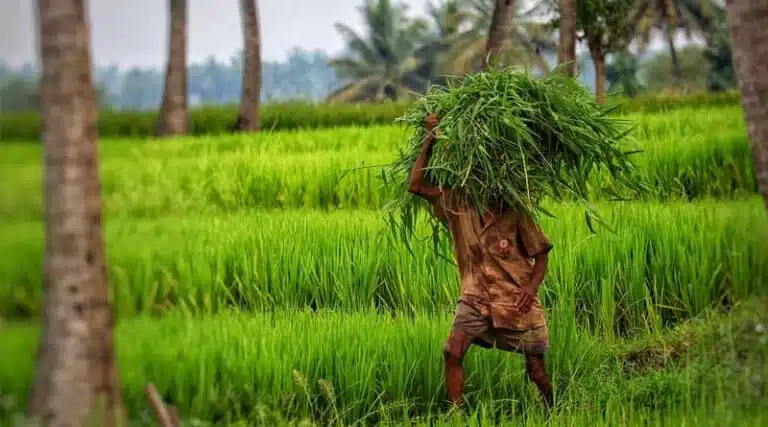Update on Kharif Crop Area Coverage as of July 18, 2025

The Department of Agriculture and Farmers’ Welfare has announced the latest figures for kharif crop area coverage as of July 18, 2025. The report highlights significant changes in the area sown for various crops compared to the previous year. Notably, rice and pulses have seen considerable increases, while some oilseeds have experienced a decline in sown area. This data is crucial for understanding agricultural trends and planning for the upcoming harvest season.
Overview of Kharif Crop Coverage
As of mid-July 2025, the total area covered under kharif crops stands at 1,096.65 lakh hectares. This figure represents a notable increase of 27.93 lakh hectares compared to the previous year. The kharif season, which typically runs from June to September, is vital for the agricultural economy, particularly for staple crops like rice and pulses. The data released by the Department of Agriculture provides insights into the agricultural landscape, helping farmers and policymakers make informed decisions.
Key Crop Statistics
Among the various crops, rice has shown a remarkable increase in area sown, reaching 403.09 lakh hectares in 2025, up from 176.68 lakh hectares in 2024. This represents an increase of 19.47 lakh hectares, indicating a strong focus on rice cultivation this season. Pulses also saw an increase, with a total of 129.61 lakh hectares sown, compared to 81.98 lakh hectares last year, marking an increase of 1.84 lakh hectares. These figures reflect a positive trend in the cultivation of essential food crops, which are crucial for food security.
Changes in Oilseed and Coarse Cereals Areas
In contrast to the positive trends in rice and pulses, the area sown for oilseeds has decreased. The total area for oilseeds is reported at 194.63 lakh hectares, down from 156.76 lakh hectares in 2024, showing a decline of 6.04 lakh hectares. This decline raises concerns about domestic oilseed production, which is vital for cooking oil supply. Additionally, coarse cereals have also seen an increase, with a total of 180.71 lakh hectares sown, up from 133.65 lakh hectares in the previous year, indicating a growing interest in these crops.
Implications for Farmers and the Agricultural Sector
The data released by the Department of Agriculture is significant for farmers and stakeholders in the agricultural sector. The increase in rice and pulses suggests a potential boost in food availability, which is essential for both domestic consumption and market stability. However, the decline in oilseed area may lead to increased reliance on imports, impacting prices and availability. As the kharif season progresses, these statistics will play a crucial role in shaping agricultural policies and support programs aimed at enhancing productivity and sustainability in the farming sector.
Observer Voice is the one stop site for National, International news, Sports, Editor’s Choice, Art/culture contents, Quotes and much more. We also cover historical contents. Historical contents includes World History, Indian History, and what happened today. The website also covers Entertainment across the India and World.
Follow Us on Twitter, Instagram, Facebook, & LinkedIn

